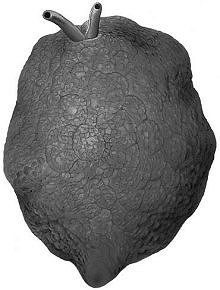
|
Relevant Synonyms
Misidentification
|
|
| drawing: Tuvia Kurz |
|
SHORT
DESCRIPTION
color :
body color very variable, from peach or purple to dark brown or almost black. Opaque white or black circles or polygons frequently present on the dorsal surface (Gosliner et al., 1996). Foot of similar color, but slightly lighter.
common size :
up to 20 cm in length. |
DISTINGUISHING CHARACTERISTICS
BIOLOGY / ECOLOGY
habitat :
it can be frequently observed crawling over sand and rubble bottoms (Gosliner et al., 1996). The Mediterranean specimens were dredged in sandy mud 48 m deep (Barash and Danin, 1977a). |
|
1st
Mediterranean record
|

|
|
DISTRIBUTION
|
ESTABLISHMENT SUCCESS
speculated reasons for success :
|
|
|
MODE OF
INTRODUCTION |
IMPORTANCE TO
HUMANS |
|
KEY
REFERENCES
|
|
|
 Oscanius semperi Vayssière, 1897
Oscanius semperi Vayssière, 1897